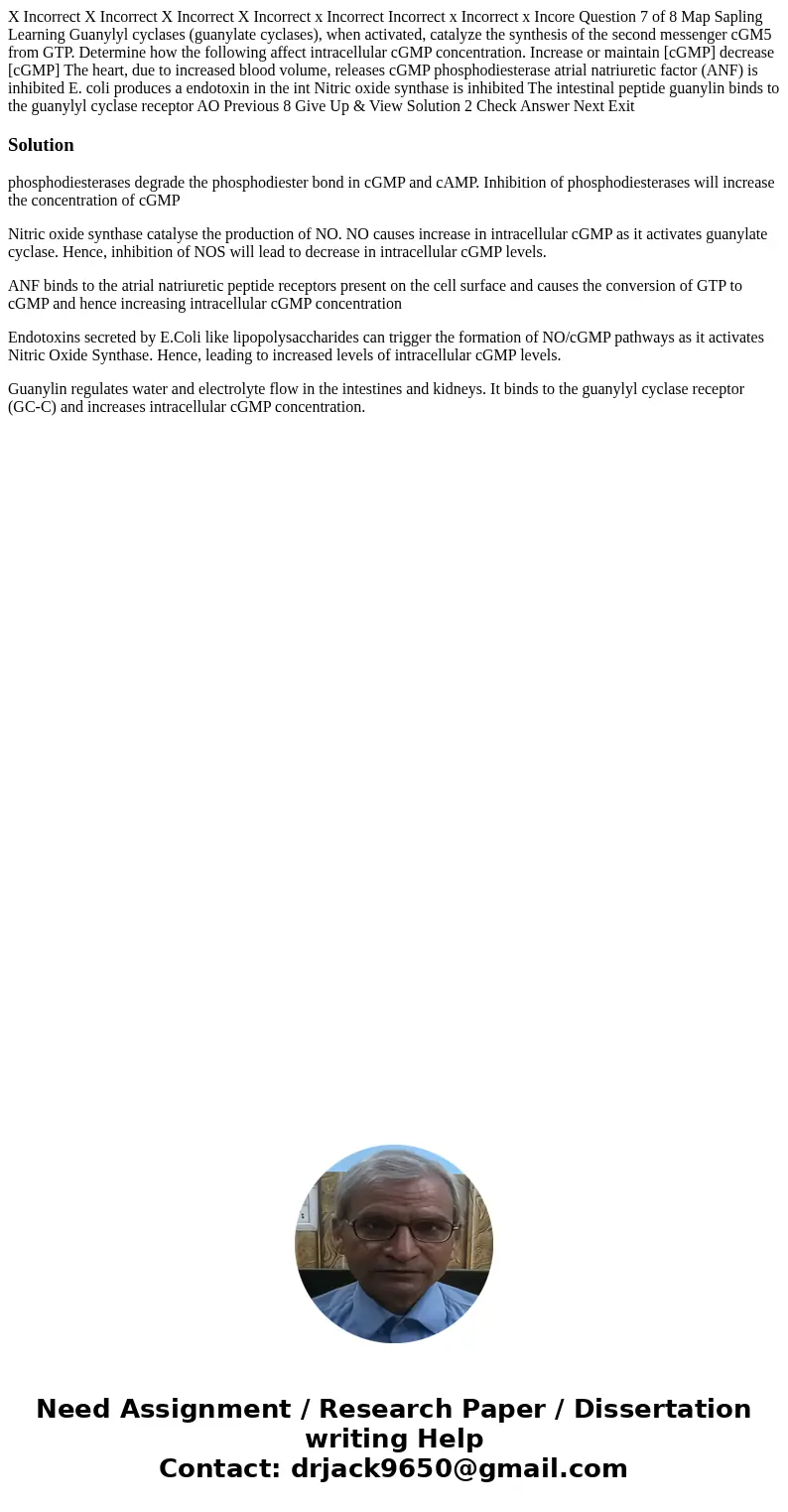X Incorrect X Incorrect X Incorrect X Incorrect x Incorrect
Solution
phosphodiesterases degrade the phosphodiester bond in cGMP and cAMP. Inhibition of phosphodiesterases will increase the concentration of cGMP
Nitric oxide synthase catalyse the production of NO. NO causes increase in intracellular cGMP as it activates guanylate cyclase. Hence, inhibition of NOS will lead to decrease in intracellular cGMP levels.
ANF binds to the atrial natriuretic peptide receptors present on the cell surface and causes the conversion of GTP to cGMP and hence increasing intracellular cGMP concentration
Endotoxins secreted by E.Coli like lipopolysaccharides can trigger the formation of NO/cGMP pathways as it activates Nitric Oxide Synthase. Hence, leading to increased levels of intracellular cGMP levels.
Guanylin regulates water and electrolyte flow in the intestines and kidneys. It binds to the guanylyl cyclase receptor (GC-C) and increases intracellular cGMP concentration.

 Homework Sourse
Homework Sourse